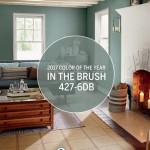Organic Modern Interior Design: Mastering the Color Palette
Organic modern interior design represents a synthesis of two distinct yet complementary styles. It blends the clean lines and functionality of modernism with the warmth, natural textures, and earthy appeal of organic design. A crucial element in achieving this balanced aesthetic lies in the selection and application of a thoughtful color palette. This article elucidates the key components of an organic modern color palette, providing guidance on how to effectively utilize it to create a harmonious and inviting living space.
The foundation of an organic modern color palette is rooted in nature. It draws inspiration from the subtle hues found in landscapes, forests, and seascapes. This approach emphasizes subdued tones and avoids harsh, overly saturated colors. The palette typically incorporates a range of neutral shades, punctuated by carefully chosen accent colors that evoke a sense of calm and connection to the environment. Achieving a successful organic modern design requires a deep understanding of how these colors interact and contribute to the overall ambiance of the space.
The Core of the Palette: Neutral Foundations
Neutral colors form the cornerstone of the organic modern aesthetic. These serve as a backdrop upon which other elements of the design can shine. The most common neutral choices for organic modern interiors include:
Warm Whites: Off-whites, creams, and ivory offer a softer and more inviting alternative to stark, clinical white. These shades reflect light effectively while imbuing the space with a sense of warmth and comfort. Warm whites work exceptionally well on walls, providing a versatile canvas for incorporating natural materials and textures.
Beige and Taupe: These earth-toned neutrals provide a grounding and stabilizing effect. Beige often contains subtle yellow or tan undertones, whereas taupe leans towards gray or brown. These colors are particularly effective in creating a sense of organic connection, mimicking the shades found in sand, soil, and natural stone. They work well for large surfaces like flooring and upholstery.
Grays: Gray can be a surprisingly versatile neutral in organic modern design, provided the right shade is selected. Opt for soft, warm grays with hints of brown or green to avoid a cold or industrial feel. Charcoal gray can be used sparingly as an accent to add depth and drama, while lighter grays create a serene and calming atmosphere.
The key to using neutrals effectively is to layer different shades and textures to prevent the space from feeling flat or monotonous. Consider incorporating variations in the sheen of paint, the texture of fabrics, and the grain of wood to add visual interest and depth.
Bringing Nature Inside: Earthy Accents
While neutrals provide the foundation, accent colors are crucial for injecting personality and vibrancy into an organic modern space. These colors are directly inspired by the natural world and should be used judiciously to complement the neutral backdrop. Popular earthy accent colors include:
Greens: Evoking forests, foliage, and meadows, greens are a natural fit for organic modern design. Opt for muted, earthy greens such as sage, olive, or moss green. These shades bring a sense of tranquility and connection to nature. They can be incorporated through paint, textiles, or even indoor plants.
Blues: Representing the sky and the ocean, blues can add a calming and refreshing element to the palette. Choose muted blues with gray or green undertones, such as dusty blue, teal, or seafoam green. These softer blues create a serene atmosphere and complement natural materials like wood and stone.
Browns: Beyond beige and taupe, deeper browns like chocolate brown, umber, and terracotta can be used as accent colors to add warmth and richness. These shades evoke the earth and create a sense of grounding. They work well for furniture, accessories, and architectural details.
Rust and Terracotta: These warm, earthy tones add a touch of vibrancy and personality without overwhelming the space. They bring a sense of warmth and connection to natural clay and earth. Consider using these colors for accent pillows, throws, or artwork.
When selecting accent colors, consider the existing light in the room and how it will affect the appearance of the colors. Natural light tends to enhance warm colors, while artificial light can sometimes skew colors towards cooler tones. Test paint samples in the room under different lighting conditions before making a final decision.
The Role of Texture and Natural Materials
The color palette of organic modern design is intrinsically linked to the use of natural materials and textures. The interplay between color and texture is what creates a truly harmonious and inviting space. Materials such as wood, stone, linen, cotton, wool, and leather are all essential elements of this style.
Wood: The natural grain and color variations in wood bring warmth and character to a space. Different wood species, such as oak, walnut, and birch, offer a range of colors and textures that can be incorporated into furniture, flooring, and architectural details. Opt for wood finishes that highlight the natural beauty of the material, such as oil or wax finishes. Avoid overly glossy or heavily stained wood, which can detract from the organic feel.
Stone: Natural stone, such as marble, granite, and slate, adds a touch of elegance and sophistication to organic modern design. The variations in color and pattern found in natural stone create visual interest and connect the space to the earth. Consider using stone for countertops, flooring, or accent walls.
Textiles: The texture of fabrics plays a critical role in softening the hard lines of modern design and adding warmth and comfort to the space. Choose natural fabrics such as linen, cotton, wool, and jute. These materials offer a range of textures that can be layered to create a sense of depth and visual interest. Consider using textured throws, pillows, and rugs to add tactile appeal.
Plants: Incorporating indoor plants is an essential aspect of organic modern design. Plants not only bring the outdoors in but also add a pop of natural color and texture to the space. Choose plants with varying leaf shapes and sizes to create visual interest. Consider using natural fiber planters to complement the overall aesthetic.
By carefully selecting and layering natural materials, it is possible to create a space that feels both modern and connected to the natural world. The interplay between color and texture is crucial in achieving this balance.
The successful execution of an organic modern color palette requires careful consideration of balance and harmony. The goal is to create a space that feels both stylish and comfortable, modern and inviting. By adhering to the principles outlined in this article, it is possible to achieve a stunning organic modern interior that reflects a deep appreciation for both design and nature.

5 Best Organic Modern Color Palette Combinations Grace In My Space

Organic Modern Interior Design A Journey

Modern Organic Style

2024 Modern Organic Paint Colour Palette Benjamin Moore Interior Design Selection E The Look Names

Power Of Color Palettes In Interior Design

Is Organic Modern Interior Design A Good Fit For You

Color Palette For Home 12 Combos Designers Love Havenly Interior Design Blog

5 Best Organic Modern Color Palette Combinations Grace In My Space

17 Living Room Color Palettes Our Designers Love Havenly Interior Design Blog

Timeless Organic Modern Color Palette Ideas
Related Posts








